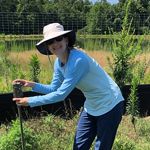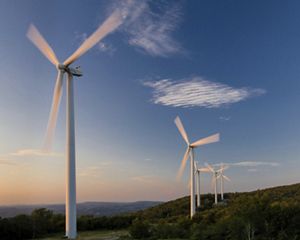Making Solar Wildlife-Friendly
Creating solutions to maximize conservation benefit from solar production.

North Carolina is among the top four states for solar electricity production nationwide, alongside California, Florida, and Arizona.
As of June 2023, 9% of the state’s electricity was generated from solar production. That's enough to power over 1 million homes. Solar accounts for over $11 million in total investment. With 8,407 MW of solar capacity covering over 45,000 acres of land across the state, the industry is expected to continue to grow in the coming years.
Unless sited on open land, brownfield, or previous development, these projects can sometimes require clearing of wooded areas due to the sheer size of utility-scale solar installations. As a result, habitats and ecosystems can be fragmented or disrupted.
The Nature Conservancy has developed a framework of six principles (in addition to the NC Solar Siting web map) for solar facility design aimed at reducing the landscape impacts of utility-scale solar development and promoting renewable energy. As part of the NC Pollinator Conservation Alliance (NCPCA), TNC works with state agencies and solar developers to recommend, implement, and test best management practices based on the principles.
Guiding Principles for Wildlife-Friendly Installations
We’re using the best available science to help solar developers design wildlife-friendly facilities specific to North Carolina. Below are the six principles of low impact solar siting and design:
- Avoid areas of high native biodiversity and high-quality natural communities
- Allow for wildlife connectivity, now and in the face of climate change
- Preferentially use disturbed or degraded lands
- Protect water quality and avoid erosion
- Restore native vegetation and grasslands
- Provide wildlife habitat
Best management practices are site-specific, so we’re working closely with the NCPCA and solar developers to ensure the best possible impacts on wildlife. Several developers have recognized the need for better practices, and we have worked with them over the past 4 years to monitor solar facilities for biodiversity outcomes.

Creating Wildlife Corridors
Utility-scale solar facilities must comply with the National Electric Code, which requires fencing that is at least seven feet high—occasionally with the top foot consisting of barbed wire. However, blocking off 20 to 35 acres of land in the middle of an ecosystem—especially forestland—can be detrimental to wildlife.
Solar facilities began experimenting with a “wildlife permeable fence” which has larger holes than chain link fence, allowing medium-sized animals to pass through (see NC solar guidance for specs). After TNC camera traps recorded an astounding success at one of Birdseye Renewable Energy’s Tennessee facilities, we recommended that Pine Gate Renewables implement this new system at sites in North Carolina, a decision that ultimately led to another fruitful relationship.
Once Pine Gate had installed the new wildlife-permeable fencing—with holes large enough for raccoons, rabbits and squirrels to fit through—TNC installed motion-sensitive cameras at the sites in Johnston and Moore Counties. These cameras were in place for four years and captured plenty of images showing wildlife interacting with the new boundary. Our report summarizes our 4 years of monitoring biodiversity at solar facilities (see NC solar facility monitoring report).
The permeable fence may be an important way to mitigate the impacts of solar development on wildlife. Also important is creating unfenced wildlife “passageways” through large facilities, to allow big mammals like deer, coyotes, and bears to traverse the area.
Developing Lasting Partnerships
Solar installations sited on disturbed or degraded lands or on rooftops and in urban environments are still preferred because they are less detrimental to natural ecosystems. For example, distributed solar (multiple, smaller sites built on degraded lands) and developing mine lands for solar are opportunities to limit development of natural lands.
By continuing to pursue innovative ways to improve solar farms and other renewable energy sites, we can further lessen the impacts we have on wildlife habitats and help animals thrive. We’ll continue to work with partners and solar developers across the state to advance climate solutions that benefit both wildlife and people.

